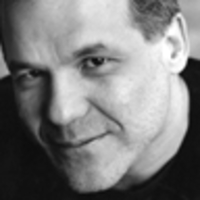After following the Occupy Wall Street protests for months, I was ready for the violence. It happened suddenly, as violence always does. First there was the menacing hush, then the sound of shoving and scraping and muffled thuds. The cries pierced the chilly night air as if the people in the crowd—some of them camped out in the same few square feet for more than 12 hours—had been screaming inside their heads like that all their lives. The atmosphere filled with pepper spray, people staggered, their faces red and swollen. Shots were fired. Everyone stampeded toward the opening doors and … the sales began!
Black Friday is no longer simply an exercise in selfishness, greed, and bad taste. It has become a human-rights issue. The spectacle of human beings transformed into baying hounds by the false promise of things is almost on a par with the grotesque social engineering of Stalin and Mao. Rather than the brutality of the Khmer Rouge, it seems that all it takes to enslave American minds is the promise of 50 percent off two lipsticks from Moulin Rouge.
It was perfectly fitting that some OWS protesters made Target their target. The hysteria on Black Friday is like Occupy Wall Street (which began as a revolt against consumerism) turned on its head. Rather than demonstrating against greed, the crowds that began to assemble Thursday night at malls and stores were, in effect, a demonstration against self-control.
Yet they share the hope and the desperation of their alter egos in Occupy Wall Street. Like the protesters, the mad shoppers are segments of the middle class that have been utterly abandoned by politics.
You had the man waiting for hours throughout the night for his local mall to open so that he could buy the pair of Adidas his son had been waiting for. And you had the man, waiting in Zuccotti Park, for the doors of the New York Stock Exchange to open and let in some fairness and rationality. Still hanging on by his fingernails to the edge of the system, the former will settle for a 50 to 60 percent discount on the things that empower him. Disgorged by the system altogether, the latter will settle only for a 40 or perhaps 50 percent tax on the upper echelon of the system. Call it the difference between short-term and long-term hope.

“Black Friday” is a curious term. The epithet “black” is customarily put before a day of the week to connote some type of disaster—particularly, in this country, financial disaster. In 1869, “Black Friday” came to refer to the day of the so-called Fisk-Gould scandal, which was a financial panic caused by gold speculation. The day of the great Wall Street crash in 1929 came to be known as “Black Thursday.” How, then, did the first day of the Christmas-shopping season come to have the coloration of calamity?
It’s simple: Black Friday is an experiment in controlled social catastrophe. It is a foot carefully dipped in a whirlpool. The merchants are nearly giving the stuff away. The consumers are nearly stealing it. The whole situation is like the simulation of a riot, a breakdown in civil harmony. If it became a permanent situation, the social order would collapse.
This year it seems that the experiment was flirting with a virulent permanence. The merchants started the sales earlier, and drove their prices down further, than they had before. The customers were more “competitive”—to use the merchants’ own darkly comic euphemism—than they had been before: i.e., they nearly killed each other. The desire to get something for nothing, which had driven both the real-estate and the derivatives market into the ground, was alive and well in the hordes waiting for their discounted Xboxes and table saws. The rage at being excluded from the American Dream, which propels OWS, made its way, in distorted form, into the malls.
In the wake of Black Friday, you realized that the true conflict in America was no longer between the haves and the have-nots. It was between people with money and people with piles of useless appliances—between a wild excess of money creating more money, and a wild lack of money purchasing more and more unnecessary things that, in turn, created less money.
The Blackness of this past Friday could really be the color of any old day of the American week.






